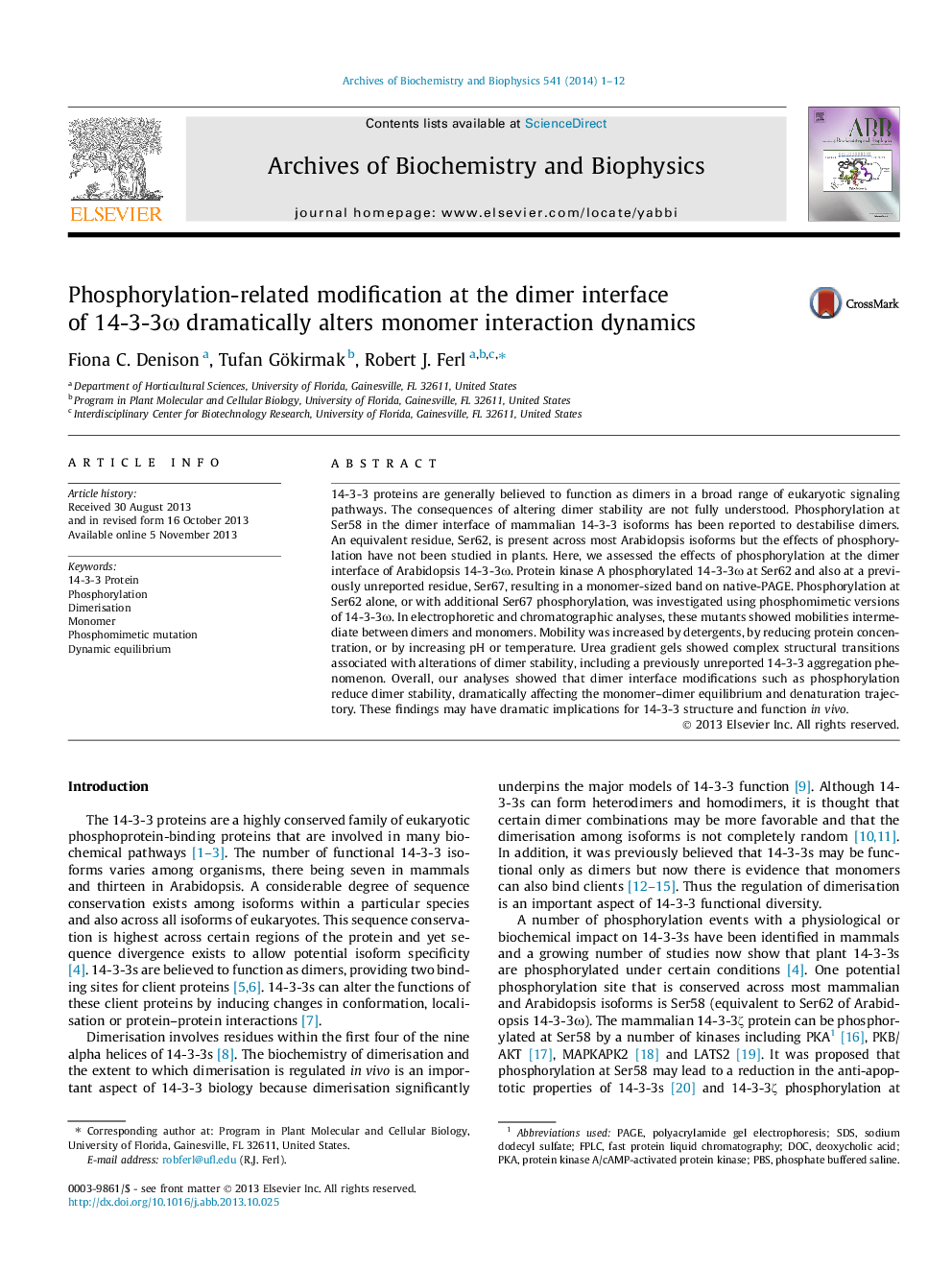| Article ID | Journal | Published Year | Pages | File Type |
|---|---|---|---|---|
| 1925279 | Archives of Biochemistry and Biophysics | 2014 | 12 Pages |
•The role of phosphorylation of Arabidopsis14-3-3ω at Ser62 and Ser67 was studied.•Phosphomimetic mutants show gel mobility intermediate between monomers and dimers.•Phosphomimetic mutation shifts the monomer–dimer equilibrium towards monomers.•Urea, DOC, temperature and pH affect the position of the equilibrium.•Phosphomimetic mutants form higher order aggregates when dimers are dissociated.
14-3-3 proteins are generally believed to function as dimers in a broad range of eukaryotic signaling pathways. The consequences of altering dimer stability are not fully understood. Phosphorylation at Ser58 in the dimer interface of mammalian 14-3-3 isoforms has been reported to destabilise dimers. An equivalent residue, Ser62, is present across most Arabidopsis isoforms but the effects of phosphorylation have not been studied in plants. Here, we assessed the effects of phosphorylation at the dimer interface of Arabidopsis 14-3-3ω. Protein kinase A phosphorylated 14-3-3ω at Ser62 and also at a previously unreported residue, Ser67, resulting in a monomer-sized band on native-PAGE. Phosphorylation at Ser62 alone, or with additional Ser67 phosphorylation, was investigated using phosphomimetic versions of 14-3-3ω. In electrophoretic and chromatographic analyses, these mutants showed mobilities intermediate between dimers and monomers. Mobility was increased by detergents, by reducing protein concentration, or by increasing pH or temperature. Urea gradient gels showed complex structural transitions associated with alterations of dimer stability, including a previously unreported 14-3-3 aggregation phenomenon. Overall, our analyses showed that dimer interface modifications such as phosphorylation reduce dimer stability, dramatically affecting the monomer–dimer equilibrium and denaturation trajectory. These findings may have dramatic implications for 14-3-3 structure and function in vivo.
Graphical abstractFigure optionsDownload full-size imageDownload high-quality image (100 K)Download as PowerPoint slide
